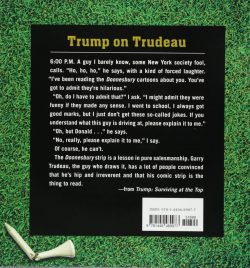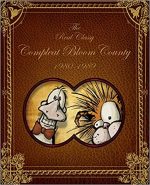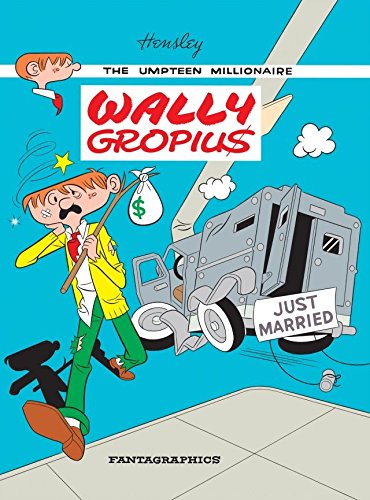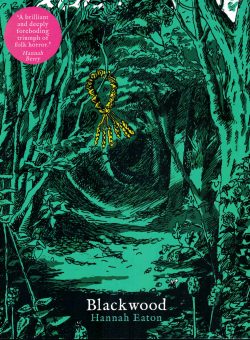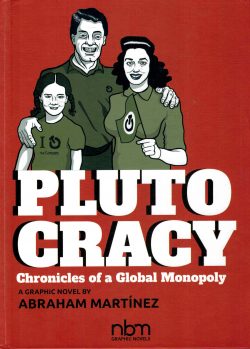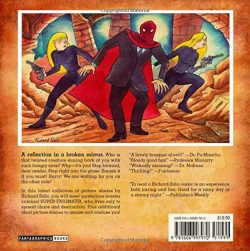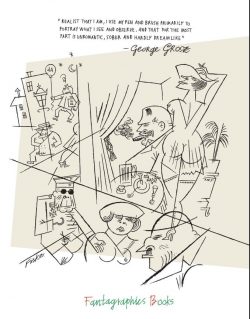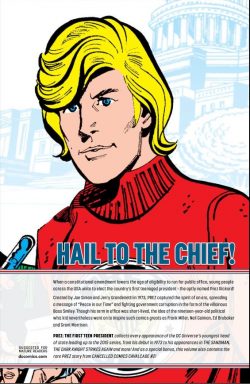
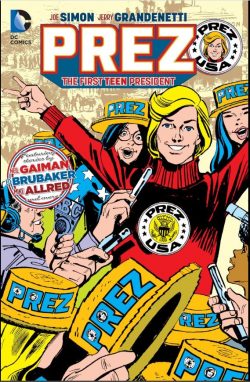
By Joe Simon, Jerry Grandenetti & Creig Flessel, with Cary Bates, Neil Gaiman, Ed Brubaker, Frank Miller, Grant Morrison, Art Saaf, Mike Allred, Bryan Talbot, Mark Buckingham, Eric Shanower & various (DC Comics)
ISBN: 978-1-4012-6317-1 (TPB)
Win’s Christmas Gift Recommendation: Because We Believe … 9/10
I’ve been saving this fabulously funny, viciously satirical gem for the closing moments of an actual election, and now that my interference can’t possibly affect what has become the strangest and most contentious campaign in US history and the icing on the Great Big Cake celebrating the utter devaluation of democracy, I think it well past time to offer the world a different vision of leadership and governance before it’s too late…
It won’t change anything in the grand scheme of things, but at least we can comfortably claim that this time around it can’t possibly get any stranger than fiction, right?
At a time when American comic books were just coming into their adolescence – if not maturity – Prez was a hippie teenager created by industry royalty. In the early 1970s, Joe Simon made one of his irregular yet always eccentrically fruitful sojourns back to DC Comics, managing to sneak a bevy of exceedingly strange concepts right past the usually-conservative powers-that-be and onto the spinner racks and newsstands of the world.
Possibly the most anarchic and subversive of these postulated a time (approximately twenty minutes into the future) when and where teenagers had the vote. The first-time electorate – idealists all – elected a diligent, honest young man who was every inch the hardworking, honest patriot every American politician claimed to be…
In 2015 that concept was given a devilishly adroit makeover for the post-millennial generation and the result was the superbly outrageous cartoon assessment of the State of the Nation known as Prez: Corndog-in-Chief. Once you’re done here, you should read that too and then ferociously lobby DC to release the concluding chapters in that saga…
Back here, however, and in 1972, Simon (Captain America, Fighting American, The Fly, Black Magic, Young Romance) was passionately doing what he always did: devising ways for ever-broader audiences to enjoy comics…
This carefully curated trade paperback compilation (also available in digital formats) deftly gathers every incidence of the best leader they never had from original run Prez #1-4 (September 1973-March 1974), through unpublished tales from Cancelled Comics Cavalcade #2, through guest cameos and revivals in Supergirl #10, The Sandman #54, Vertigo Visions: Prez #1, The Dark Knight Strikes Again and The Multiversity Guidebook #1.
It all begins in the little town of Steadfast where average teen Prez Rickard makes a minor splash by fixing all the clocks to run on time, whilst throughout the urban USA, dissent, moral decay and civil breakdown terrify the populace in an election year. Corrupt businessman and political influencer Boss Smiley, wants to capitalise on the new amendment allowing 18-year olds to vote and picks young Rickard as his perfect patsy, but all his chicanery comes awry when newly elected Prez turns out to have a mind and agenda of his own…
With early – if rather heavy-handed – salutes to ecological and native rights movements, ‘Oh Say Does That Star Spangled Banner Yet Wave?’ by Simon, veteran illustrator Jerry Grandenetti set the scene for a wild ride unlike any seen in kids’ comics…
Equal parts hallucinogenic political satire, topical commentary and sci-fi romp, the mandate mayhem expanded with second issue ‘Invasion of the Chessmen’, as a global goodwill tour threatens to bring worldwide peace and reconciliation until America’s chess master provokes an international incident with the chess-loving Soviet Union. Cue killer robots in assorted chess shapes and a sexy Russian Queen and watch the fireworks…
‘Invasion of America’ in issue #3 tackles political assassination and social repercussions after Prez decides to outlaw guns. I think no more need be said here…
The original run ended with the fourth saga, which examined international diplomacy as Transylvania dispatches its latest Ambassador to Washington DC: an actual werewolf paving the way to devious conquest and a ‘Vampire in the White House’ (inked by Creig Flessel)…
Although the series was cancelled, a fifth tale was in production when the axe fell. It appeared with other prematurely curtailed stories in 1978’s Cancelled Comics Cavalcade #2 and in monochrome appears here as ‘The Devil’s Exterminator!’ with a bug infestation in DC tackled by a mythical madman. When Congress refuses to pay his sky-high bill ($5 million or three lunches in today’s money!), Clyde Piper abducts all the children, and PotUS is forced into outrageous executive action…
There was one final 1970s appearance. Supergirl #10 (October 1974) featured ‘Death of a Prez!’ by Cary Bates, Art Saaf & Vince Colletta wherein the youthful Commander in Chief was targeted for assassination by killer witch Hepzibah, using an ensorcelled Girl of Steel to do her dirty work… with predictable results…
Prez Rickard vanished in a welter of superhero angst and science fiction spectacle after that but made a quiet reappearance in Neil Gaiman’s iconic Sandman story arc World’s End. Illustrated by Michael Allred, Bryan Talbot & Mark Buckingham, ‘The Golden Boy’ (The Sandman #54 October 1993) offers a typically askance view of the boy leader’s origins, his enemies, the temptations of power and the ends of his story. This generated enough interest to spark follow-up one-shot Vertigo Visions: Prez #1 (September 1995) wherein Ed Brubaker & Eric Shanower crafted ‘Smells Like Teen President’. After being missing for years, America’ youngest President is being trailed by a young hitchhiker who might well be his son…
The moving search for family, identity, belonging and purpose is followed by a typically iconoclastic vignette by Frank Miller & Lynn Varley taken from The Dark Knight Strikes Again (December 2001) with the Leader of the Free(ish) World exposed as a computer simulation before the history lesson concludes with Grant Morrison, Scott Hepburn & Nathan Fairbairn’s page on Hippie-dippy ‘Earth 47’ and its comic book landmarks (Prez, Brother Power, The Geek, Sunshine Superman and other) as first seen in The Multiversity Guidebook #1 (January 2015).
I used to think comics were the sharpest reflection of popular culture from any given era. That’s certainly the case here, and maybe there are even lessons to be learned from re-examining them with the eyes of experience. What is irrefutable, and in no way fake news, is that they’re still fun and enjoyable if read in a historical context.
So read this, vote if you can and get ready. I can guarantee not even funnybook creators can predict what’s coming next…
© 1973, 1974, 1978, 1993, 1995, 2001, 2002, 2015, 2016 DC Comics. All Rights Reserved.
